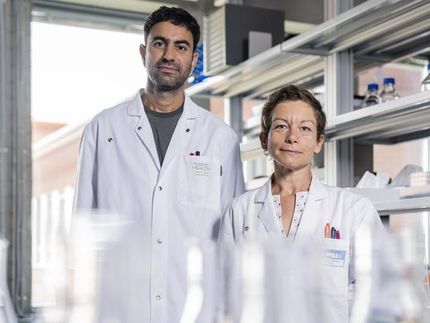Nanovectors Could Improve the Combined Administration of Antimalarial Drugs
According to the study, the strategy has the added advantage of targeting the transmissible phase of the parasite- the gametocyte
Advertisement
Encapsulating two drugs with different properties into nanovesicles surrounded by antibodies can greatly improve their delivery and efficacy, according to a study led by Xavier Fernández Busquets, director of the joint Nanomalaria unit at the Institute for Bionengineering of Catalonia (IBEC) and the Barcelona Institute for Global Health (ISGlobal), an institution supported by ”la Caixa”.

ISGlobal
Combining two drugs that act through different mechanisms is one of the most efficient approaches currently used to treat malaria. However, differences in the drugs’ physichochemical properties (solubility, half-life, etc.) often affect treatment efficacy.
To overcome this obstacle, Fernández Busquets and his team have developed a nanovector –consisting of small spheres or liposomes– that can simultaneously transport compounds that are soluble in water (hydrophilic) and in lipids (lipophylic).
“By encapsulating both drugs in the same nanovector, we make sure that both will persist for the same time in the organism,” explains Fernández-Busquets. As proof of concept, the research team introduced the water-soluble drug pyronaridine in the liposome lumen and the lipid-soluble drug atovaquone in its membrane. In addition, they covered the liposome with an antibody that recognises a protein expressed by red blood cells (whether they are infected or not) and gametocytes (the sexual phase of the parasite, responsable for host-to-host transmission). Hence the term immunoliposome.
The results show that both drugs, when encapsulated, inhibited parasite growth in vitro at concentrations that had no effect when used as free drugs. Thanks to the antibodies, the liposomes rapidly bound to the target cells and efficiently delivered the drug.
The authors argue that this strategy could be used in a near future to treat severe cases of malaria that are admitted in hospitals, where intravenous administration of liposomes is feasible. The challenge lies in developing nanovectors adequate for oral administration in order to treat non-complicated malaria, a line of work the research group is currently exploring.
“Current treatments target mostly the asexual phases of the parasite. This new strategy would also target the sexual phase or gametocyte, the only phase that can be transmitted from humans to mosquitoes, and would thereby contribute to reducing the emergence and spread of antimalarial resistance,” adds the researcher.
























































